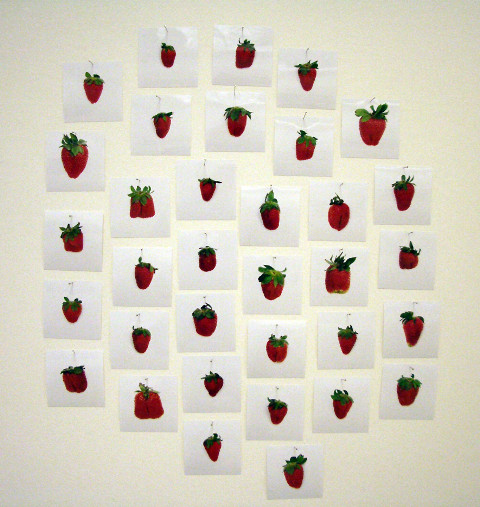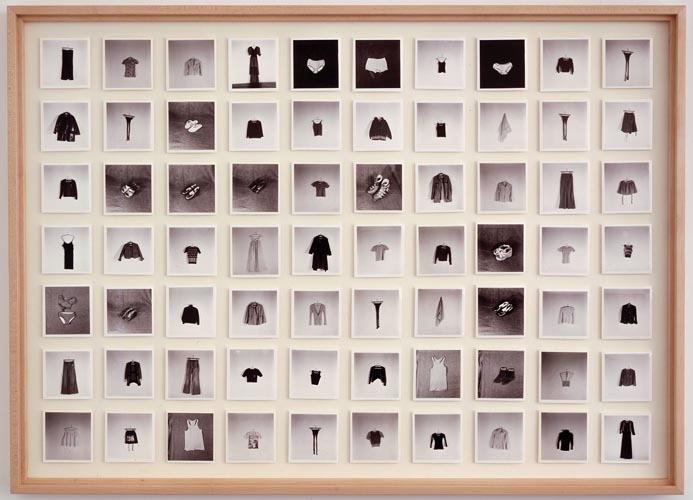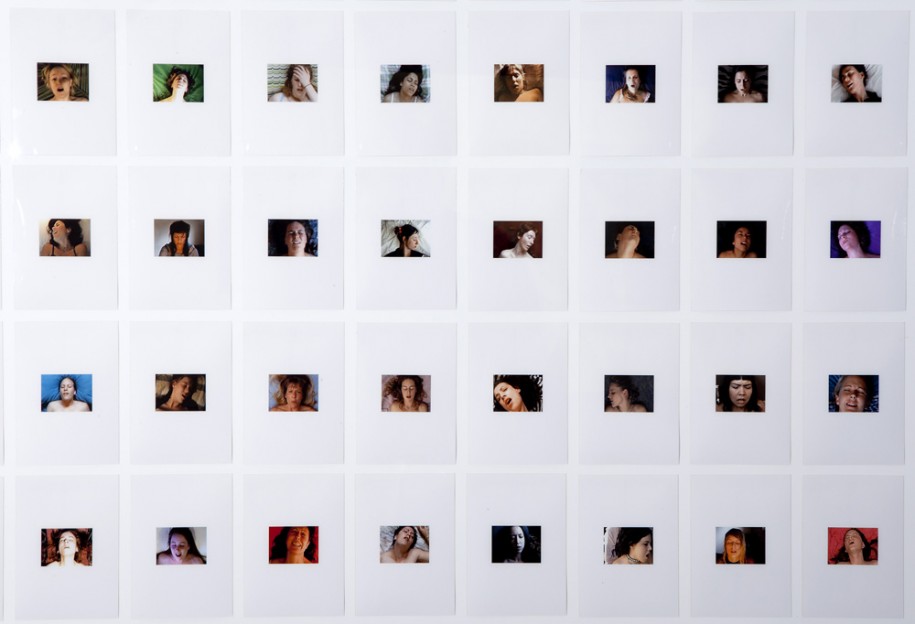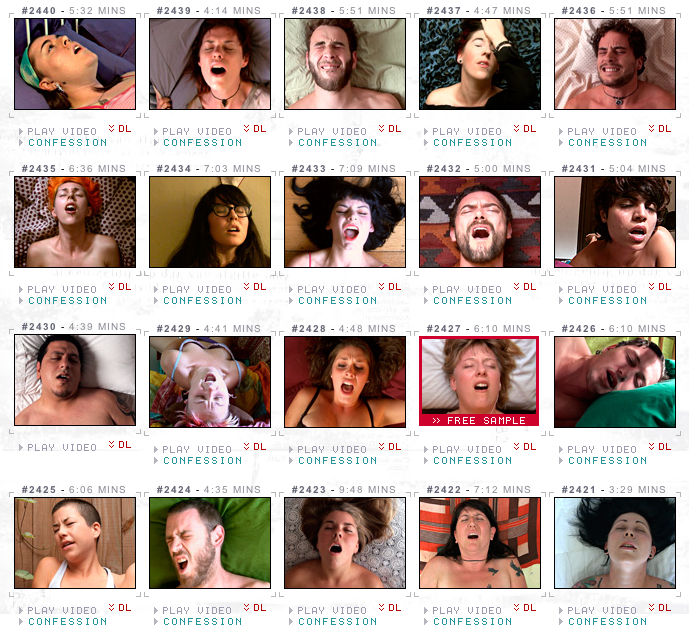|
|||||||||||
Hans-Peter Feldmann (*Düsseldorf 1941) |
|||||||||||
 One Pound of Strawberries by Hans Peter Feldmann 2004 |
|||||||||||
 Hans-Peter Feldmann, All the Clothes of a woman, 1970s |
|||||||||||
Hans-Peter Feldmann "Agony" und Website Beautiful Agony |
|||||||||||
Launched in 2004, Beautiful Agony is an erotic website “dedicated to the beauty of human orgasm”. The site gathers (and offers, for a fee) videos of people (men and women, young and old, sometimes couples but more often individuals) who have filmed themselves while masturbating. The unique thing about this site is that no nudity is shown: the subjects film themselves from the neck up, showing only their faces, because “that's where people are truly naked”. Beautiful Agony quickly became an internet phenomenon due to how its chaste sexuality raises a number of crucial questions already present in other, more neutral social platforms (like YouTube): where does the balance lie between our desire for ex- posure and the idea of protecting our privacy? What makes “normal” people want to reveal such an intimate moment? How has our relationship with sexua- lity evolved in the 21st century? Screenshots and videos, freed from the protec- tion of the fee-paying site, quickly spread around the web. |
|||||||||||
 |
|||||||||||
Hans-Peter Feldmann: Agony |
|||||||||||
 |
|||||||||||
